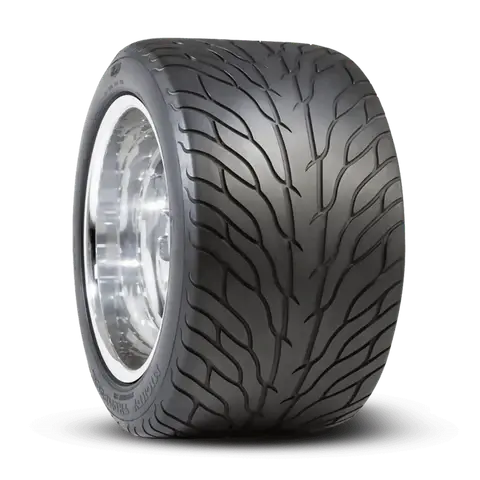As the weather warms up, it's time to start thinking about hitting the track. After all, there's nothing like the feeling of flying around a corner at high speed. However, before you head out, it's important to make sure your car is in top condition. Neglecting basic track car maintenance and these track day essentials can not only lead to a disappointing day at the track, but it can also be dangerous. With that in mind, here’s a track-day checklist with items you don't want to overlook.
Make sure EVERYTHING is tight
At the track, you want your car to be in top condition so you can perform at your best. Part of ensuring your car is ready to race is doing a bolt check. By making sure everything is tight, you can avoid having a wheel fall off or a strut fail during a race. This involves checking the tightness of all the bolts on your car–lug bolts, wheel spacers, hose clamps, radiator hoses, intercooler couplers, and valve cover gaskets. If you have aftermarket suspension in your car, it is especially important to check the tightness of the bolts to avoid any problems while racing. By taking the time to do a bolt check, you can help ensure your car is ready to race and perform at its best.
Browse aftermarket suspension parts
Do you need to bed-in new brake pads?
Yes! If the brakes were just replaced, go for a drive and do a proper bedding-in procedure on the pads. It's better to be safe than sorry when it comes to brakes because if they fail while on the track, the result could be pretty dangerous for you and those around you.
If a car can go faster, that's great and all, but the car has to be able to stop too. Before taking the car out on the track, do a thorough inspection of the brakes. This easy brake maintenance includes making sure there is proper thickness on the brake pads, that the rotors are not cracked or glazed over, and that everything else brake-wise is in good shape.
Which brakes wear out faster?
In general, front brake pads will wear down faster than rear brake pads. This is due to the weight transfer that occurs as you brake. When you apply the brakes, the weight of the vehicle shifts forwards onto the front wheels. This puts more stress on the front brakes, causing them to wear down more quickly. So if you're noticing that your front brake pads are wearing out faster than your rear ones, there's no need to be alarmed. It's just a normal part of driving.
How often should you check your brake fluid?
Check your brake fluid at least every 4-5 years if you’re just using your car for daily commuting. But if you’re at the track often, check it at least once every season. If the fluid is murky and dark, it needs to be replaced - otherwise, your brakes could fail when you need them most. One way to tell if your brake fluid is old is by its color; fresh fluid is typically a clear, yellowish color, while old fluid is dark and cloudy. Additionally, brake fluid is hygroscopic, meaning that it absorbs moisture over time. If there's too much moisture in your brake fluid, it will lower the fluid's boiling point. This can cause problems when braking hard, as you may experience soft pedals or a mushy feeling. To play it safe, we recommend doing a brake fluid flush before each track day. That way, you can be confident that your brakes will perform when you need them most.
Browse high-performance brake fluid

Do a fluid check
When prepping your car for track day, it's important to do a basic fluid check. This includes changing your oil and coolant before the event. It's especially important to do this if your track car is also your daily driver. Coolant can last much longer than oil, but if you run a specific ratio of coolant to water or if you add WaterWetter, make sure it's the correct amount. Also, be sure that all your fans are working properly, especially when you're sitting in the heat and idling. Doing a fluid check will help ensure that your car is running at peak performance on race day.
As anyone who has ever taken their car to the track knows, there are a lot of different factors that can affect your performance. One often-overlooked component is the power steering fluid. Just like brake fluid, power steering fluid can become contaminated with dirt, debris, and moisture, which can lead to clogged filters and restricted flow. If you don't check your power steering fluid before heading to the track, you could end up with a failure that could cause you to lose control of your car. So make sure to check your fluid levels and filters regularly, and always have a spare bottle of clean power steering fluid on hand just in case.
Make sure your wheels are in good shape
Always check your wheels before heading out to the track. A visual check from the ground might not reveal anything, but getting the car up in the air and getting face-to-face with it will allow you to see if your tires are worn on the inside or if there are any cords showing. Check the date codes, too - you don't want to use old tires that won't do anything but make you slide into a wall, your safety depends on it.
It's important to make sure you check your tire tread depth before heading to the track. R-compound tires and slicks are going to have a different minimum tread depth rating than something like a mid-level performance tire. And if this is your first track day of the season, you definitely want to check your tire pressure. That's something that you can adjust as you go like if you're driving your car to the track, you might want a more comfortable tire pressure setting and then re-adjust when you arrive.
What are the best tires for racing?
At first glance, all tires may seem the same. But if you're a passionate driver, you know that not all tires are created equal. The right tires can make all the difference when it comes to track day. If you're looking for a tire that performs well on the track, you'll want to look for a tire with good grip and braking performance. Toyo and Mickey Thompson are two brands that offer great products for track use. However, there are many other great brands worth considering. When it comes to choosing the right tire for your needs, it's important to do your research and select a product from a reputable brand. With the right tires, you can take your driving experience to the next level. We have great tire brands in stock worth checking out.

Check your battery
It's important to make sure that your battery and charging system are in good condition. This is especially important if you live in an area with a cold winter climate. If possible, bring your battery indoors when it's not track season. Alternatively, you can plug it into a trickle charger to keep it topped up.
Keeping your battery and charging system healthy will save you money in the long run. Treat them well and they'll treat you well!
Make sure that your battery is properly secured. A battery that isn't properly mounted can be a fire hazard, and if it comes loose during a race it could cause serious damage to your car and the track. There are a few different ways to mount a racing battery, but the most important thing is to make sure that it's securely fastened. You don't want to take any chances with your safety, so take the time to do it right. With a little care and attention, you can ensure that your racing battery is properly mounted and ready for action.
Browse batteries & mounting kits
If you’re a first time newbie driver or you’re a seasoned pro, these track vehicle maintenance tips will help you ensure fun and safety on track day. If you have any questions about track day essentials, don’t hesitate to give us a call at 1-888-MAPerformance. We’re looking forward to talking with you.


 Buy WatterWetter
Buy WatterWetter


Comments (0)
There are no comments for this article. Be the first one to leave a message!